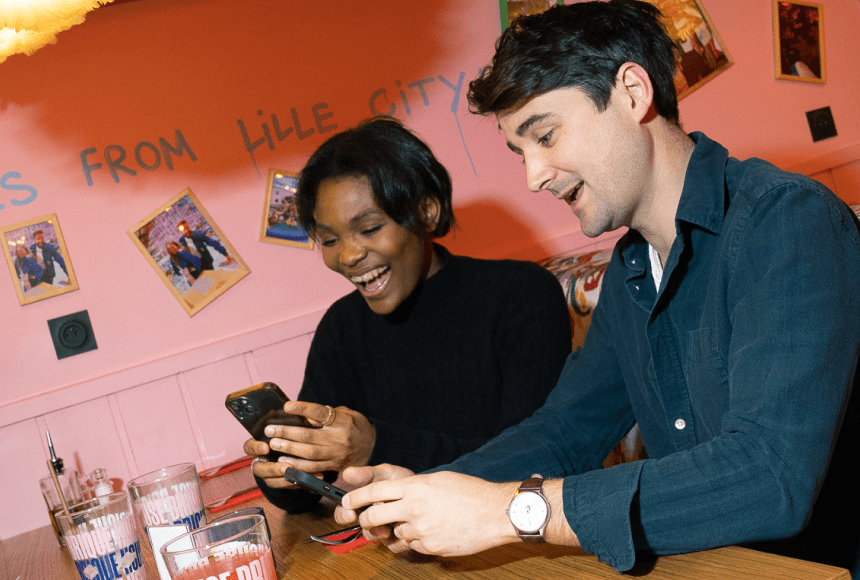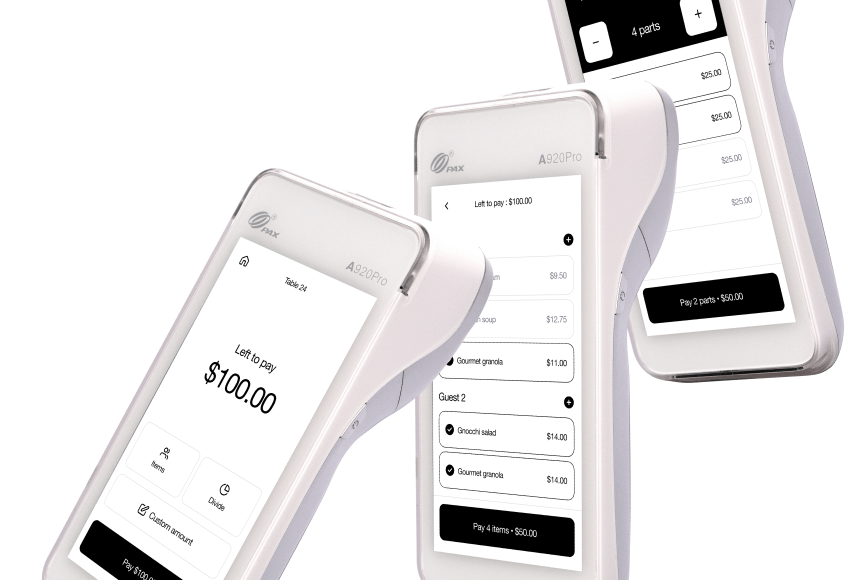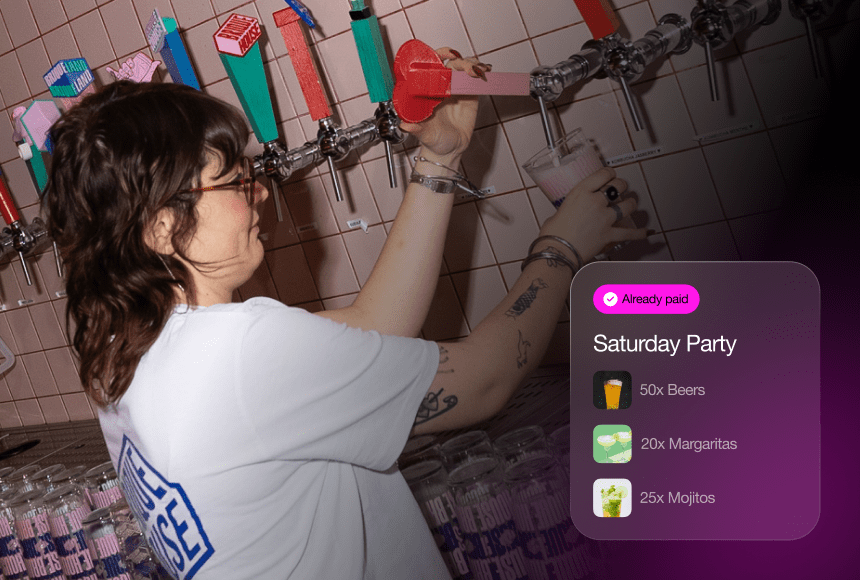
Making a Seamless Transition to Contactless Checkout
Why QR Code Payment Is Gaining Ground
Running a successful restaurant is an art—and a science. Your dishes need to dazzle, your ambiance should be inviting, and your operations must hum like a well-tuned engine. Amid these challenges, the right technology can make all the difference. Enter QR code payment, a method that’s swiftly gaining favor among both diners and restaurant staff. According to the National Restaurant Association, a growing number of guests now expect contactless payment options (source), reflecting a broader trend toward frictionless, digital-forward services.
But how can you implement QR code payment without upsetting your restaurant’s existing workflow or legacy systems? The key is to plan carefully and choose a solution that meshes with the tools you already depend on. Below, we’ll walk through the main steps to take, questions to ask, and considerations to keep in mind as you bring QR code payment into the fold.
1. Assess Your Current Tech Setup
Before jumping into any new technology, it’s essential to understand what you have in place. Start by making a quick list of your current systems—like your point-of-sale (POS), any digital reservation tools, and back-office software for inventory. Note how these systems talk to each other. For instance, does your POS feed real-time sales data into your accounting program? Does it integrate with online ordering platforms?
This overview helps you spot the potential impact points for a QR code solution. For example:
- Integration with POS: If your POS is outdated or lacks an open API, you’ll need a QR code payment platform that can work around those constraints.
- Hardware limitations: Some restaurants still rely heavily on fixed POS terminals. Will your team benefit from a new solution or find it disruptive?
- Staff familiarity: If your servers and back-office staff already use certain software daily, be mindful of how a new system could change their routines.
Once you grasp your starting point, you’ll have a clearer picture of the technical and cultural shifts required for a smooth adoption.
2. Define Your Goals and Priorities
Next, consider exactly why you want to add QR code payment in the first place. Is it to shorten checkout lines during peak hours, or to give diners the freedom to split checks effortlessly? Are you hoping to reduce server stress, or do you want a modern image that resonates with tech-savvy guests? Common motivations include:
- Faster table turnover: Minimizing wait times at checkout can free up tables more quickly for new guests.
- Better data collection: Tying digital payments to your POS can reveal valuable insights into guest habits and popular items.
- Reduced labor strain: A self-service checkout flow can let staff focus on guest engagement instead of transaction mechanics.
- Enhanced diner satisfaction: Many guests love the convenience of scanning and paying at their own pace.
Clarity on these goals helps you choose a QR code payment system with the right features—whether that means integrated tipping prompts, loyalty program tie-ins, or advanced reporting capabilities.
3. Choose a Platform That Plays Nicely with Your POS
A major deciding factor is whether your chosen QR code solution will smoothly integrate with your existing POS. Without a clean handshake between the two, you risk double data entry, transaction errors, or general staff confusion. Look for solutions that:
- Offer proven integrations: Check the vendor’s site or consult with them directly about which POS systems they support. Platforms like sunday explicitly list the systems they connect with, making your life simpler.
- Use open APIs: If a provider doesn’t have a direct integration with your POS, see if they provide open APIs. This can let your tech team or a third-party developer build a custom bridge.
- Sync in real time: You want sales data, item availability, and check amounts to update automatically on both ends. A real-time sync prevents staff or diners from seeing outdated information.
When in doubt, reach out to the vendor’s support team. They can often walk you through how their solution pairs with your POS and what specific steps to take for smooth integration.
4. Plan the Physical Setup in Your Dining Area
QR codes might be digital, but you still need to consider their placement in your physical restaurant space. Ideally, diners should see the code and know how to use it without confusion. Think about:
- Table stands or stickers: Do you want small stands with a QR code printed on each, or peel-and-stick decals on the table itself?
- Clear instructions: A short phrase like “Scan here to pay” is helpful. You can also note “No app needed—just use your phone’s camera!” to reassure less tech-savvy diners.
- Brand consistency: If you can customize the code’s design or the sign it appears on, do so. Subtle branding cues help diners associate this convenience with your unique atmosphere.
Ensure codes are neither too small to scan easily nor too large to be awkward. Test them on various phone types to confirm they work from typical seating angles, even in dim lighting.
5. Update Your Staff and Workflow
Tech is only as strong as the people using it. Before rolling out QR code payment, gather your team to explain how it fits into their daily tasks. Cover points like:
- How to introduce it to customers: Servers might mention, “You can scan the code at your table when you’re ready to pay,” a few minutes before guests typically ask for the bill.
- What to do if diners have questions: Not everyone will be familiar with QR codes. Staff should feel comfortable assisting or reassuring them, possibly showing how to open their phone’s camera and tap the link.
- Troubleshooting basics: If a code isn’t scanning, it might be a phone issue or a glare on the sticker. Staff can offer a backup option, like a direct link or a traditional card swipe, in rare cases.
- New tipping process: Emphasize how tips can be higher if guests see digital prompts. Let your staff know it can benefit them to politely point out the convenience to diners.
When employees understand the “why” behind adopting QR code payments, they’re more likely to embrace it—and to communicate its perks to customers.
6. Manage Security and PCI Compliance
Data breaches and credit card fraud are real concerns, so you’ll want to ensure your QR code payment solution follows industry standards like PCI DSS (Payment Card Industry Data Security Standard). Confirm that the vendor uses encryption and tokenization to protect sensitive card details. Also ask about:
- Secure connections: Payments should occur over encrypted HTTPS connections.
- Limited data storage: Ideally, the platform doesn’t store full card numbers. Instead, it should pass them securely to the payment processor.
- Regular updates: Vendors should push frequent security patches, especially if vulnerabilities are discovered.
By aligning with these best practices, you protect not just your customers but also your restaurant’s reputation. The last thing you want is negative press over a security lapse that tarnishes trust.
7. Incorporate Additional Features for a Bigger Impact
QR code payments don’t have to stand alone; they can be a gateway to other helpful tools. Consider linking the payment flow to:
- Real-time feedback or reviews: Once diners pay, invite them to leave a quick rating or comment. Happy customers often share glowing feedback when prompted at the right moment.
- Loyalty programs: A digital checkout can automatically add points or track visits, giving diners an immediate reward or reason to come back.
- Promotions and upsells: Some systems let you highlight seasonal specials or a bounce-back discount for a future visit, all within the payment screen.
This integrated approach transforms a simple payment into an opportunity to reinforce your brand and nurture ongoing customer relationships. It’s a small step that can have a lasting ripple effect on loyalty and revenue.
8. Monitor and Adjust Your Operations Post-Integration
After you’ve rolled out QR code payment, pay attention to how it affects day-to-day activities. Do you see a drop in lines at the register? Are you turning tables faster on busy nights? Is your staff less stressed during the final stage of each transaction? Based on these observations, you can refine certain steps:
- Adjust staff scheduling: If the checkout bottleneck eases, you might distribute shifts differently or reassign roles during peak hours.
- Fine-tune signage: If customers still ask for the check, maybe the instructions aren’t clear enough. A second sign or more explicit directions could fix it.
- Gather employee feedback: Your servers might have ideas about improving the flow or encouraging more customers to adopt the new method.
This iteration phase is crucial. Even the best tech can only reach its full potential if you adapt the entire service model to leverage it fully.
9. Share the Benefits with Your Customers
Don’t assume everyone automatically knows how QR code payment works. A little communication can go a long way. Let customers know about the new feature through channels like:
- Social media posts: Tease a quicker checkout experience to pique interest before they step foot in your restaurant.
- In-venue signage: Place a small poster or card near the entrance: “Scan, pay, go—faster than ever!”
- Server scripts: Have your staff mention it casually when handing over menus or checking on tables: “By the way, you can now pay via QR code whenever you’re ready.”
When diners know about this streamlined option upfront, they’re more likely to embrace it—and to appreciate the convenience. As a bonus, the positive impression might lead them to tip generously or leave favorable online reviews.
10. Evaluate Your Returns and Next Steps
Finally, keep track of whether your goals are being met over time. Are you seeing a measurable lift in table turnover during peak hours? Have staff reported fewer errors or less stress? Are tip amounts and average ticket sizes on the rise? Collecting data on these factors tells you how well the integration is working.
If your results are positive, you might explore additional enhancements—like adding digital ordering from the same QR code or offering upsell prompts on the payment screen. Or perhaps you’ll decide to roll out more advanced loyalty features that link each transaction to a rewards program. On the other hand, if things don’t go as planned, revisit your original strategy. Maybe there’s a training gap, or your signage isn’t clear enough.
The good news: once the basic integration is done, you have a flexible foundation. You can fine-tune, expand, and adapt it as your restaurant’s needs evolve.
A Realistic Glimpse into the Future
Imagine a diner in your restaurant, easily scanning a code to settle their bill right after finishing dessert. They tip a bit higher, too, because the system suggested a quick 20% option. Before walking out, they give you a star rating, leaving a short review about how “fast and painless” the whole experience was. Meanwhile, your staff is already prepping the table for the next party—no muss, no fuss. That’s the kind of day-to-day improvement a well-integrated QR code payment system can deliver.
Beyond the immediate efficiency gains, this technology positions your restaurant as a forward-thinking, guest-focused operation. Whether you run a busy brunch spot or a high-end bistro, meeting customers where they are—in the digital realm—can enhance satisfaction, boost loyalty, and free your team to spend more time on the personal touches that keep people coming back.
Integration may seem daunting at first, especially if you’ve grown used to your legacy POS or your staff has been doing things a certain way for years. But with a clear vision, a trusted vendor, and a willingness to adapt, you’ll find that QR code payment can fit smoothly into your current system—unlocking new levels of convenience, efficiency, and profitability. And in a fast-evolving restaurant landscape, that’s exactly the kind of recipe that can set you ahead of the pack.
Find out more today
Drop us your details below and we’ll reach out within the next 24h
“Check please” is a thing of the past.
With our integrated QR codes your customers pay in seconds, straight from their table.



